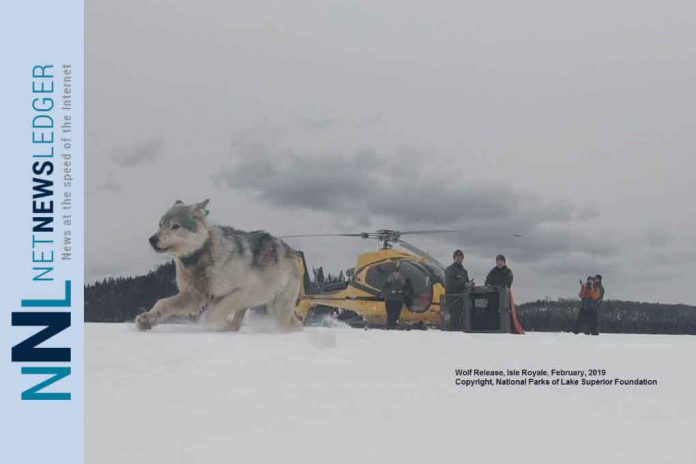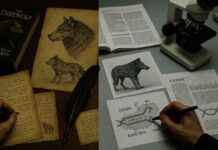HOUGHTON, MICH – CLIMATE – Following the translocation of wolves from the Grand Portage Indian Reservation in Minnesota, Michipicoten Island Provincial Park, and the Ontario mainland to Isle Royale National Park, a team of wildlife researchers working with the National Park Service have collared moose on the island for the first time since 1984.
This collaboration among the National Park Service, University of Minnesota College of Veterinary Medicine, Michigan Technological University, and Grand Portage Band of Lake Superior Chippewa aims to help the National Park Service assess population health, effects of herbivory, and impacts of predator restoration to the ecosystem.
“This is the beginning of a novel effort to compare numerous aspects of ecology and the health of the moose population between Isle Royale National Park and the Grand Portage Indian Reservation,” Mark Romanski, Chief of Natural Resources for Isle Royale National Park said. “It also represents an opportunity to evaluate the impacts of restoring predation to the island ecosystem.” The National Park Service is implementing a plan to translocate 20 and 30 wolves to the island over the next three to five years.
Funding for the moose collaring project came from National Park Service, National Science Foundation, Michigan Technological University, Great Lakes Restoration Initiative and the Grand Portage Band of Lake Superior Chippewa. Many generous private donations also have supported this project.
During 13 – 17 February 2019, a helicopter team, wildlife veterinarian, and wildlife research biologists attached GPS collars to 10 female moose on both the west and east ends of the island. During capture, they also collected biological samples and assessed individual moose health. The moose was alert and able to walk away in under two minutes after being handled by the team. Since then, the research team has been continuously monitoring them by GPS.
The team plans to conduct several studies with this data including understanding differences in the health of island and mainland moose populations, how predator dynamics influence moose populations, how forest management influences moose, and the role of climate on moose and ecosystem health.
Isle Royale’s simple predator-prey system of wolves and primary moose is ideal for comparative research with the mainland population of moose, also fitted with GPS collars, found on the Grand Portage Indian Reservation. The reservation hosts a more complex ecosystem with multiple predator and prey species. Mainland populations of moose are in decline for numerous reasons: predation from bears and wolves and the effects of changes in climate, such as changes in amount and duration of snow, which has allowed increases in winter ticks, as well as parasitism from brain worm as whitetail deer, move into moose range.
In contrast to mainland Minnesota, the moose population on Isle Royale has increased rapidly in recent years. Although moose in Isle Royale also suffer from high winter tick loads, brain worm has not made it to the island because of the absence of deer. Another crucial difference is that wolf numbers are high on the mainland (due to high deer densities), whereas until recently on Isle Royale only a few remaining wolves are impacting the moose population. As a result, the impact of the growing moose population on forest composition and succession is increasingly apparent and experts are concerned that such high levels of browsing damage are impacting forest regeneration and may eventually lead to nutritional stress for moose.
“The Grand Portage Band of Chippewa were the historical occupants of Isle Royale and used the Island for subsistence purposes,” says Seth Moore, PhD, director of biology and environment at the Grand Portage Band of Chippewa. “We hope to learn how to better manage moose populations from this research.”
The team of researchers includes Tiffany Wolf, University of Minnesota; Seth Moore, Grand Portage Band of Lake Superior Chippewa; Rolf O. Peterson, John A. Vucetich, and Sarah R. Hoy, Michigan Technological University; and Mark Romanski, Isle Royale National Park. This team collectively has decades of experience concerning moose and wolf research, as well as the ecosystems in which the project occurs.








